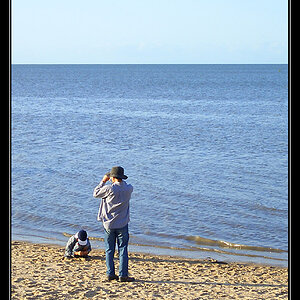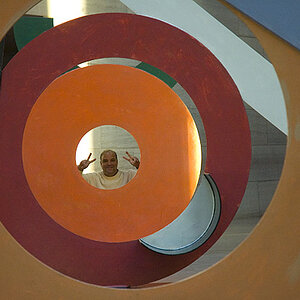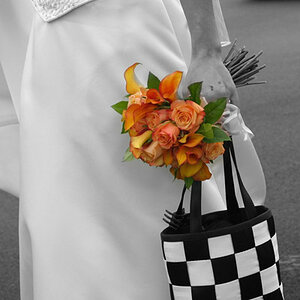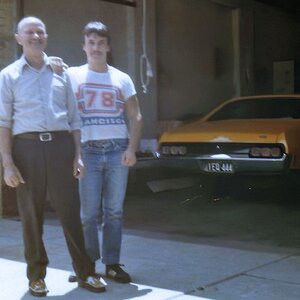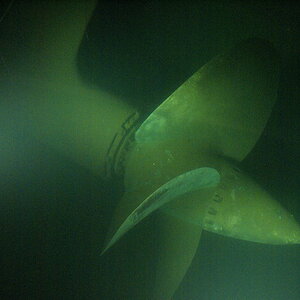Navigation
Install the app
How to install the app on iOS
Follow along with the video below to see how to install our site as a web app on your home screen.

Note: This feature currently requires accessing the site using the built-in Safari browser.
More options
You are using an out of date browser. It may not display this or other websites correctly.
You should upgrade or use an alternative browser.
You should upgrade or use an alternative browser.
Ansel Adams
- Thread starter Patrickktown
- Start date
Tiller
No longer a newbie, moving up!
- Joined
- Feb 5, 2013
- Messages
- 1,455
- Reaction score
- 452
- Location
- Charleston, SC
- Can others edit my Photos
- Photos OK to edit
Thomas Edison was an incredible inventor; ahead of his time.
Nuh uh!! He was a quack!
DSRay
No longer a newbie, moving up!
- Joined
- Jan 27, 2011
- Messages
- 168
- Reaction score
- 62
- Location
- Naples, FL USA
- Can others edit my Photos
- Photos OK to edit
Thomas Edison was an incredible inventor; ahead of his time.
What does 'ahead of his time' mean? He was exactly in his time. If he was ahead of his time he would have invented the CD and I would have saved all that money I spent on vinyl, 8 track and cassettes.
AlanKlein
Been spending a lot of time on here!
- Joined
- Nov 24, 2011
- Messages
- 2,265
- Reaction score
- 816
- Location
- NJ formerly NYC
- Website
- www.flickr.com
A personal story about Ansel Adams photos. A few years ago I attended the annual Association of International Photography Art Dealers (AIPAD) in NYC. There are dozens of photo dealers from around the world displaying their photos for sale. Of course many had Ansel's photos. As I walked around, I saw three prints of his famous Moon over Hernandez photo with the cemetery and crosses. I don't recall the exact listed prices, but one at one of the dealers was around $65,000, around $100,000 at dealer two and $140,000 at dealer three. Each was processed slightly different of course and different sizes.
Well, I was standing at the dealer for the $140,000 offering, when along comes this middle age rich man with a young, hot chick about 1/3 his age. She was dressed to kill and attract attention, of course. So I can overhear this rich guy explaining to her how different versions of the same picture can be worth different amounts. And HIS version of Hernandez cost him $165,000! As they walked away, I took another furtive glance at them. The chick seemed very impressed.
If anyone is interested in the next AIPAD show in APril, well worth going to see what's being offered for sale in the current photo market. The AIPAD Photography Show - Association of International Photography Art Dealers
There's a list of the AIPAD dealers if you want to sell your own photos. Members - Association of International Photography Art Dealers
Well, I was standing at the dealer for the $140,000 offering, when along comes this middle age rich man with a young, hot chick about 1/3 his age. She was dressed to kill and attract attention, of course. So I can overhear this rich guy explaining to her how different versions of the same picture can be worth different amounts. And HIS version of Hernandez cost him $165,000! As they walked away, I took another furtive glance at them. The chick seemed very impressed.
If anyone is interested in the next AIPAD show in APril, well worth going to see what's being offered for sale in the current photo market. The AIPAD Photography Show - Association of International Photography Art Dealers
There's a list of the AIPAD dealers if you want to sell your own photos. Members - Association of International Photography Art Dealers
JG_Coleman
No longer a newbie, moving up!
- Joined
- May 30, 2010
- Messages
- 336
- Reaction score
- 28
- Location
- Wolcott, Connecticut, USA
- Website
- www.jgcoleman.com
- Can others edit my Photos
- Photos NOT OK to edit
Adams was an incredible, first-rate A-hole. He set photography as an ART form back maybe 50 years, and reduced it to little more than a craft. He merits very little adulation as anything but a good technician.
William Mortensen: A Revival: The Strange Case of William Mortensen - Photo.net Education Forum
50 Watts
There are a lot of people in history who have accomplished great things that have forwarded mankind in one way or another... who also happen to have been *******s, bigots, Nazi sympathizers and more. In fact, in my experience, most of the people I know who have accomplished truly amazing things, are generally the folks who are going to piss off somebody or another at a cocktail party. While what they do outside of the space they were innovators in may make us question their person, it doesn't mean we must also depreciate their contribution.
I completely agree. It's funny to me that after all Adams accomplished, his distaste for Mortensen's work is somehow offered up as a scandalous character flaw. There's hardly a single great person in history to speak of who wasn't ultimately human and didn't have their assorted quarrels with a number of other people throughout their lives. Socrates, Mother Theresa, John Muir, George Washington, Albert Einstein, Ghandi... we oftentimes glorify these people as being wise and noble through and through... almost non-human lumps of sugar, spice and everything nice. How absurd! Each and every one of them had many critics in their lifetime. There were people out there somewhere that had an arguably reasonable story as to why "Ghandi was such an a*****e" or "Mother Theresa was so full of herself" .... or "Einstein was so conceited".
Renowned people are actual human beings who have/had their own sets of merits and faults. That should be a given. That is not necessarily cause for them to be knocked down a peg. If a critic can't appreciate the accomplishments of the greats after simply learning that they weren't friends with every single person that they crossed paths with in their life, then that says more about the critic actually. It says that the critic dwells in a place where they actually do believe that the great people of history were somehow beyond human, and get disappointed to find that they were very much flawed people who nonetheless managed to do great things.
Designer
Been spending a lot of time on here!
- Joined
- Apr 13, 2012
- Messages
- 18,505
- Reaction score
- 4,853
- Location
- Iowa
- Can others edit my Photos
- Photos OK to edit
Some years ago I was more or less enthralled with Adams' work, and tried to emulate parts of the work, clumsily of course.
I have since moved on from there. I no longer shoot B&W film, nor do I make B&W prints, and I probably wouldn't purchase one of Adams' prints, just because I have moved on.
There can be a lot said to commend his work, but unless it clicks with the viewer, it is simply another body of work. There are lots more works to consider.
I have since moved on from there. I no longer shoot B&W film, nor do I make B&W prints, and I probably wouldn't purchase one of Adams' prints, just because I have moved on.
There can be a lot said to commend his work, but unless it clicks with the viewer, it is simply another body of work. There are lots more works to consider.
JG_Coleman
No longer a newbie, moving up!
- Joined
- May 30, 2010
- Messages
- 336
- Reaction score
- 28
- Location
- Wolcott, Connecticut, USA
- Website
- www.jgcoleman.com
- Can others edit my Photos
- Photos NOT OK to edit
There can be a lot said to commend his work, but unless it clicks with the viewer, it is simply another body of work. There are lots more works to consider.
While entirely true, the fact of the matter is that we can apply this exact phrase to literally each and every artist that has ever lived. I mean, I agree completely with your conclusion... 100%. I guess I just see that sentiment as less of a conclusion and more of a base-level point of departure for discussing the work of any artist.
- Joined
- Dec 11, 2006
- Messages
- 18,743
- Reaction score
- 8,047
- Location
- Mid-Atlantic US
- Website
- www.lewlortonphoto.com
- Can others edit my Photos
- Photos NOT OK to edit
I don't believe in 'arguing from authority' or in 'art' as some coherent thing that one person can affect too much. When I see the same technique and vision practiced now as it was 50 years ago, that's not art, that's just replication of a safe behavior - and it's not artists doing that.
AA was attractive to me, for the most part, because he gave me an insight into controlling a process that, at the time, I had very little control over.
For a long time, I though of AA as a master in seeing things and thought that his iconic photos were typical of his work.
I never really wondered why I didn't know more of his photos than Moonlight Hernandez, Bridalveil Falls and a few otehrs. What was clear to me that he was succeeding in capturing and displaying things in a way that most others before hid had not. But very quickly I became certain that I was not interested in copying his techniques to make perfectly managed images of 'things' and I left it at that, still holding him in some repute.
Several years ago the Corcoran in Washington, DC, hosted a large traveling show of AA and, as a matter of course, like Catholics going to Mass at Easter, I went. It was a stunning revelation for me. There were a very few of his 'masterpieces,' but they were scattered in a large collection of perfectly made but totally unexciting, uninteresting pictures of rocks and cacti and hills.
In a display of compulsive behavior he lavished exactitude in composition and processing control that the actual subjects didn't warrant. To me, not every subject deserves the same degree of attention and care; doing so, elevates the process over the content.
To me, this is what characterizes too many people, particularly in photography; the certainty of technique and procedure in pursuit of perfection totally replaces the uncertainty of artistic vision.
AA was attractive to me, for the most part, because he gave me an insight into controlling a process that, at the time, I had very little control over.
For a long time, I though of AA as a master in seeing things and thought that his iconic photos were typical of his work.
I never really wondered why I didn't know more of his photos than Moonlight Hernandez, Bridalveil Falls and a few otehrs. What was clear to me that he was succeeding in capturing and displaying things in a way that most others before hid had not. But very quickly I became certain that I was not interested in copying his techniques to make perfectly managed images of 'things' and I left it at that, still holding him in some repute.
Several years ago the Corcoran in Washington, DC, hosted a large traveling show of AA and, as a matter of course, like Catholics going to Mass at Easter, I went. It was a stunning revelation for me. There were a very few of his 'masterpieces,' but they were scattered in a large collection of perfectly made but totally unexciting, uninteresting pictures of rocks and cacti and hills.
In a display of compulsive behavior he lavished exactitude in composition and processing control that the actual subjects didn't warrant. To me, not every subject deserves the same degree of attention and care; doing so, elevates the process over the content.
To me, this is what characterizes too many people, particularly in photography; the certainty of technique and procedure in pursuit of perfection totally replaces the uncertainty of artistic vision.
rexbobcat
Been spending a lot of time on here!
- Joined
- Nov 28, 2011
- Messages
- 5,014
- Reaction score
- 1,967
- Location
- United States
- Can others edit my Photos
- Photos OK to edit
So I guess Adams is the Salvador Dali of photography? His work is great but he was a jerkface in real life lol
rexbobcat
Been spending a lot of time on here!
- Joined
- Nov 28, 2011
- Messages
- 5,014
- Reaction score
- 1,967
- Location
- United States
- Can others edit my Photos
- Photos OK to edit
There, I fixed it for you. Let the battle begin!Nikola Tesla was an incredible inventor; ahead of his time.
Designer
Been spending a lot of time on here!
- Joined
- Apr 13, 2012
- Messages
- 18,505
- Reaction score
- 4,853
- Location
- Iowa
- Can others edit my Photos
- Photos OK to edit
So I guess Adams is the Salvador Dali of photography? His work is great but he was a jerkface in real life lol
No, more like Joan Miró i Ferrà.
Dali was an artist on a higher plane, IMO.
Who would have thunk that a comic strip writer would have been prepared for this thread TODAY!!! http://www.creators.com/comics/25/116256_thumb.jpg
rexbobcat
Been spending a lot of time on here!
- Joined
- Nov 28, 2011
- Messages
- 5,014
- Reaction score
- 1,967
- Location
- United States
- Can others edit my Photos
- Photos OK to edit
No, more like Joan Miró i Ferrà. Dali was an artist on a higher plane, IMO.
Yeah, in terms of work I agree. I was just referring to influence within the medium.
Ansel is one of the more prominent photography figures of the 20th century like Dali was for painting.
JG_Coleman
No longer a newbie, moving up!
- Joined
- May 30, 2010
- Messages
- 336
- Reaction score
- 28
- Location
- Wolcott, Connecticut, USA
- Website
- www.jgcoleman.com
- Can others edit my Photos
- Photos NOT OK to edit
I don't believe in 'arguing from authority' or in 'art' as some coherent thing that one person can affect too much. When I see the same technique and vision practiced now as it was 50 years ago, that's not art, that's just replication of a safe behavior - and it's not artists doing that.
AA was attractive to me, for the most part, because he gave me an insight into controlling a process that, at the time, I had very little control over.
For a long time, I though of AA as a master in seeing things and thought that his iconic photos were typical of his work.
I never really wondered why I didn't know more of his photos than Moonlight Hernandez, Bridalveil Falls and a few otehrs. What was clear to me that he was succeeding in capturing and displaying things in a way that most others before hid had not. But very quickly I became certain that I was not interested in copying his techniques to make perfectly managed images of 'things' and I left it at that, still holding him in some repute.
Several years ago the Corcoran in Washington, DC, hosted a large traveling show of AA and, as a matter of course, like Catholics going to Mass at Easter, I went. It was a stunning revelation for me. There were a very few of his 'masterpieces,' but they were scattered in a large collection of perfectly made but totally unexciting, uninteresting pictures of rocks and cacti and hills.
In a display of compulsive behavior he lavished exactitude in composition and processing control that the actual subjects didn't warrant. To me, not every subject deserves the same degree of attention and care; doing so, elevates the process over the content.
To me, this is what characterizes too many people, particularly in photography; the certainty of technique and procedure in pursuit of perfection totally replaces the uncertainty of artistic vision.
It would seem that your experience with Adams' work is apparently similar to many others. I think the reason that some folks love to put Adams down (and I'm not saying you btw) is because they feel "cheated" by his mythos. They all had this "time of innocence" when they looked up to him as this god of photography and they all had this moment when they were let down to find that he wasn't really the super-human photographer that they believed in.
I suppose I may have a different view simply because I can't even remember having seen Adams work until I was already very involved in landscape photography. My initial contact with landscape photography was through the books of Galen Rowell. After that, I found my inspiration in the works of more modern landscape photographers like Ian Plant, Jon Cornforth and Franz Lanting... photographers that you can find in Outdoor Photographer magazine and the like.
When I finally stumbled upon Adams, I wasn't bogged down by much hype. I didn't think of him as a god and wouldn't have thought to go to a showing of his work "like Catholics going to Mass at Easter". I didn't have any of that baggage to distort my view of his work. What I saw were inspiring landscapes with an aesthetic that deeply permeates the entire genre in modern times. Accordingly, I was baffled to discover that most of his best work was produced between the 30s and the 50s! Take a look at the "professional landscape photography" that made it onto most postcards in that era and it's plain to see why his work was surprising and innovative in it's time. Take a look at the "fine art landscape photography" from that era and ... oh wait.. you can't... because before Adams, the ordinary person still held a certain bias that only painters could make landscape art... not camera-carriers. Look at the Hudson River School and then reference Adams' dramatic works... you'll see how he managed to translate landscape art into a photographic pursuit for the first time in history.
Beyond that... take him or leave him. He's not for everybody. But I think beyond the inherently subjective nature of all art, its really tough to make the case that Adams wasn't a pivotal and innovative figure in landscape photography.
Achaicus
No longer a newbie, moving up!
- Joined
- Nov 27, 2008
- Messages
- 146
- Reaction score
- 46
- Location
- South Eastern United States
- Can others edit my Photos
- Photos OK to edit
There is a cirtain amount of personal system of belief influence in these discussions in any age. But this isn't to say that the discussion is black and white. A camera, even Adams', can't see any part of our world the way the eye does, and our potential interpretation is completely missed by a camera. I remember being surprized when I learned how much darkroom manipulation went into one of Adams' prints. The straight unmanipulated prints of some of his captures I've seen are pretty unmemorable. In a way Adams work was only landscape painting with a new medium. Even landscape painting had it's realist and impressionistic schools of thought. But a photograph in popular oppinion carries a thought that it shows reality and for most a camera produces something more true to life than they could produce by hand.
Whether the modification of the image is done in a darkroom, by camera settings, or by photoshop, it all tangles with that early assumption of reality. Oh, but we've learned, and now we can carry on discussing the merrits of our own prefered manipulation styles and the past and current masters of those.
I'd not heard of Mortensen before today, but after seeing what little I have read via links of the disagreement between Adams and Mortensen, I can't help but see minor parallels to the disagreement between Harry Houdini and Arthur Conan Doyle. Both arguments were about intent and belief, I think.
Whether the modification of the image is done in a darkroom, by camera settings, or by photoshop, it all tangles with that early assumption of reality. Oh, but we've learned, and now we can carry on discussing the merrits of our own prefered manipulation styles and the past and current masters of those.
I'd not heard of Mortensen before today, but after seeing what little I have read via links of the disagreement between Adams and Mortensen, I can't help but see minor parallels to the disagreement between Harry Houdini and Arthur Conan Doyle. Both arguments were about intent and belief, I think.
Last edited:
Similar threads
- Replies
- 6
- Views
- 617
- Replies
- 17
- Views
- 1K


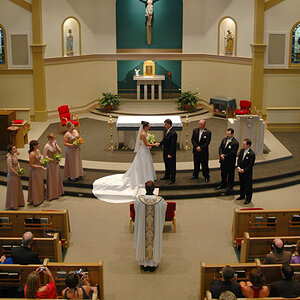
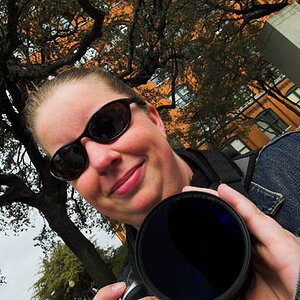
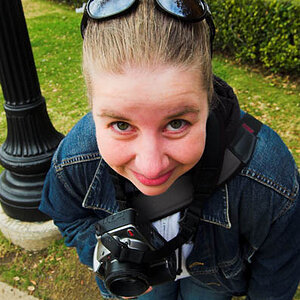
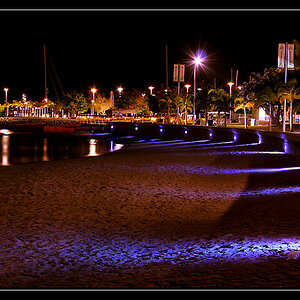
![[No title]](/data/xfmg/thumbnail/37/37425-6c82b8d207549743954f4b99b56a8153.jpg?1619738066)
